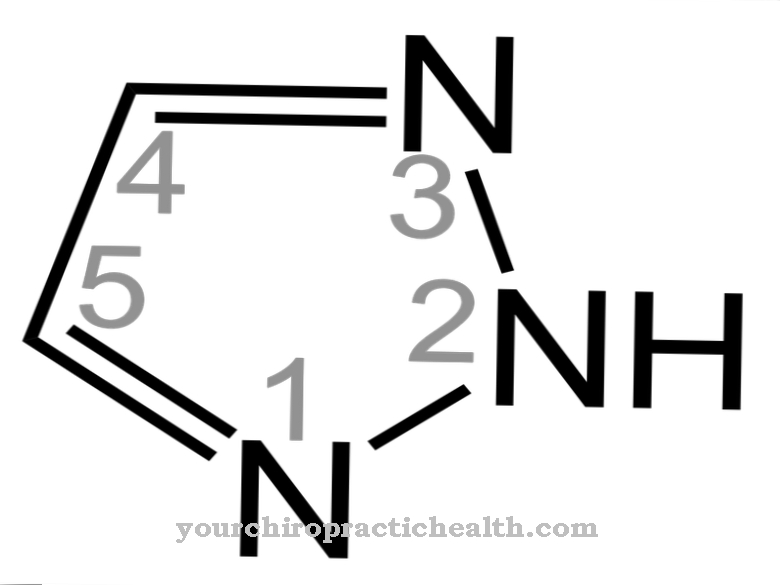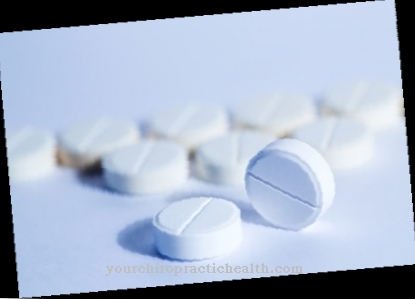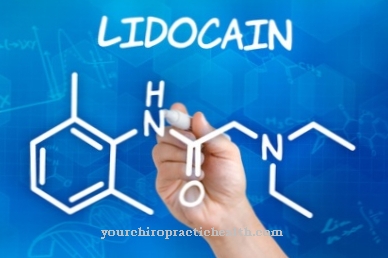As Risperidone is called an atypical neuroleptic. It is used to treat bipolar disorders and schizophrenia.
What is risperidone?

Risperidone is also called in medicine Risperidonum. This is an atypical neuroleptic that has a strong neuroleptic potency. As an atypical neuroleptic, risperidone is said to have fewer undesirable side effects on the extrapyramidal motor system. However, previous studies have provided different results.
Risperidone was developed between 1988 and 1992 by the German pharmaceutical company Janssen-Cilag, which belongs to the American company Johnson & Johnson. In 1994 the neuroleptic was approved in the United States. After its patent protection expired in 2004, risperidone was used as a generic drug.
Pharmacological effect
Doctors attribute psychotic symptoms such as hallucinations or delusions to an increase in the concentration of the neurotransmitter dopamine in the brain. However, the dopamine docking sites can be blocked by antipsychotic drugs, which inhibits the effect of the messenger substance.
However, the first neuroleptics of this type, such as haloperidol or chlorpromazine, had the disadvantage of typical side effects that were similar in their symptoms to Parkinson's disease. The reason for this was the death of nerve cells that released dopamine, which in turn caused a dopamine deficiency in the midbrain. This resulted in complaints such as slower movements, muscle tremors, stiff muscles and even immobility.
The advantage of risperidone is that its use does not lead to these side effects or that they only show up to a minor extent.
The positive effects of risperidone are created by blocking the dopamine receptors in the brain. In this way, hallucinations and delusions can be reduced. Risperidone also occupies the binding sites of the neurotransmitters adrenaline, noradrenaline and serotonin. This has a positive effect on the patient's self-control. This way they behave less aggressively and can concentrate better. Risperidone can even counteract severe depression.
The effectiveness of risperidone is believed to be fifty times higher than that of chlorpromazine. After taking it, the neuroleptic enters the blood completely through the intestines. The maximum concentration is reached after two hours. In the liver, it is metabolized to hydroxyrisperidone, the effectiveness of which is equally strong. About 50 percent of both risperidone and its antipsychotic breakdown products leave the organism in the urine after 24 hours.
Medical application & use
Risperidone is used to treat schizophrenia and bipolar disorder. It primarily treats psychoses in which the patient suffers from a pronounced misunderstanding of reality, hallucinations or delusions. This can be the case with pathological mania or chronic schizophrenia. Another indication for risperidone is psychosis in connection with dementia.
Risperidone has the property of reducing the patient's aggressive behavior towards himself or towards other people. In addition, the neuroleptic is used to support social psychiatric treatment of neglected people with pronounced behavioral problems. For mentally less developed children and adolescents, short-term therapy can take place, lasting a maximum of six weeks. Long-term treatment is considered counterproductive in aggressive dementia patients. Studies have shown a higher mortality rate among affected people.
Risperidone is taken once or twice a day in the form of tablets. Food intake has no influence on the administration of the drug. The therapy always starts with a low dose and then increases gradually until the desired effect occurs.
Other forms of administration of risperidone are orodispersible tablets and injections for patients with swallowing difficulties. A feeding tube is also available for taking the neuroleptic. Because aggressive patients sometimes defend themselves against taking the preparation, they often use a specially developed risperidone depot syringe. This remedy is injected once every two weeks. Risperidone is then released continuously.
You can find your medication here
➔ Medication to lighten the moodRisks & side effects
The most common side effects of risperidone include symptoms that are similar to Parkinson's disease. This is the case in around one in ten patients. Other common side effects are headache, insomnia, and drowsiness. In addition, there are palpitations, increased weight, dizziness, listlessness, twilight sleep, tremors, breathing problems, cough, nosebleeds, pain in the throat and larynx, constipation, diarrhea, abdominal pain, nausea, vomiting, back pain, body aches, fever, respiratory infections, rashes, Edema or anxiety are possible side effects.
Parkinson's patients and young people are often at risk of neuroleptic malignant syndrome, which is associated with high fever, muscle rigidity, circulatory collapse, and decreased consciousness. In such cases risperidone therapy should be stopped immediately.
If the patient is hypersensitive to risperidone, the agent must not be administered. The same applies to an increased concentration of the hormone prolactin without the influence of medication. The doctor must carefully weigh up before administering risperidone if there are disorders of kidney functions, Parkinson's disease, epilepsy, cardiac arrhythmias, impaired liver function, low blood pressure, tumors and dementia.
The use of risperidone during pregnancy and breastfeeding is not recommended. The harmlessness of the active ingredient could not be proven either for the mother or for the child.
Interactions due to the simultaneous administration of risperidone and other drugs are also conceivable. For example, the effect of tetracyclic or tricyclic antidepressants or beta blockers increases. If risperidone and dopamine receptor agonists are taken at the same time to treat Parkinson's disease, this leads to a weakening of the agonist effect.



























